Giona Casiraghi
Understanding Online Migration Decisions Following the Banning of Radical Communities
Dec 09, 2022Abstract:The proliferation of radical online communities and their violent offshoots has sparked great societal concern. However, the current practice of banning such communities from mainstream platforms has unintended consequences: (I) the further radicalization of their members in fringe platforms where they migrate; and (ii) the spillover of harmful content from fringe back onto mainstream platforms. Here, in a large observational study on two banned subreddits, r/The\_Donald and r/fatpeoplehate, we examine how factors associated with the RECRO radicalization framework relate to users' migration decisions. Specifically, we quantify how these factors affect users' decisions to post on fringe platforms and, for those who do, whether they continue posting on the mainstream platform. Our results show that individual-level factors, those relating to the behavior of users, are associated with the decision to post on the fringe platform. Whereas social-level factors, users' connection with the radical community, only affect the propensity to be coactive on both platforms. Overall, our findings pave the way for evidence-based moderation policies, as the decisions to migrate and remain coactive amplify unintended consequences of community bans.
Spillover of Antisocial Behavior from Fringe Platforms: The Unintended Consequences of Community Banning
Sep 20, 2022
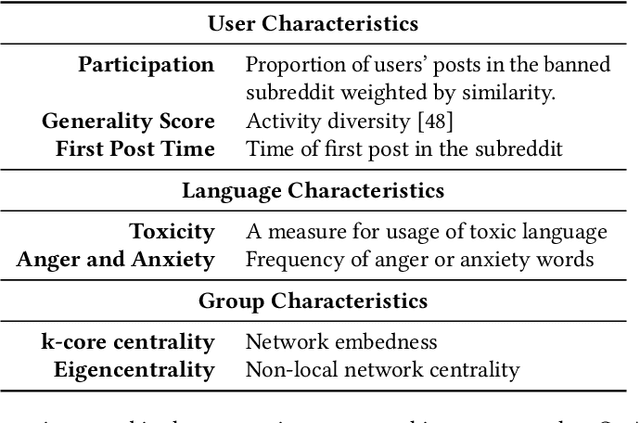
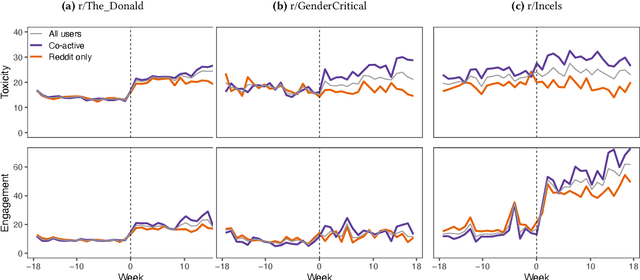

Abstract:Online platforms face pressure to keep their communities civil and respectful. Thus, the bannings of problematic online communities from mainstream platforms like Reddit and Facebook are often met with enthusiastic public reactions. However, this policy can lead users to migrate to alternative fringe platforms with lower moderation standards and where antisocial behaviors like trolling and harassment are widely accepted. As users of these communities often remain \ca across mainstream and fringe platforms, antisocial behaviors may spill over onto the mainstream platform. We study this possible spillover by analyzing around $70,000$ users from three banned communities that migrated to fringe platforms: r/The\_Donald, r/GenderCritical, and r/Incels. Using a difference-in-differences design, we contrast \ca users with matched counterparts to estimate the causal effect of fringe platform participation on users' antisocial behavior on Reddit. Our results show that participating in the fringe communities increases users' toxicity on Reddit (as measured by Perspective API) and involvement with subreddits similar to the banned community -- which often also breach platform norms. The effect intensifies with time and exposure to the fringe platform. In short, we find evidence for a spillover of antisocial behavior from fringe platforms onto Reddit via co-participation.
Reconstructing signed relations from interaction data
Sep 07, 2022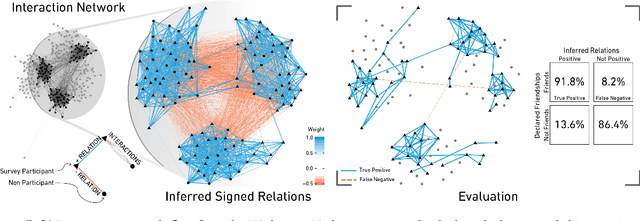
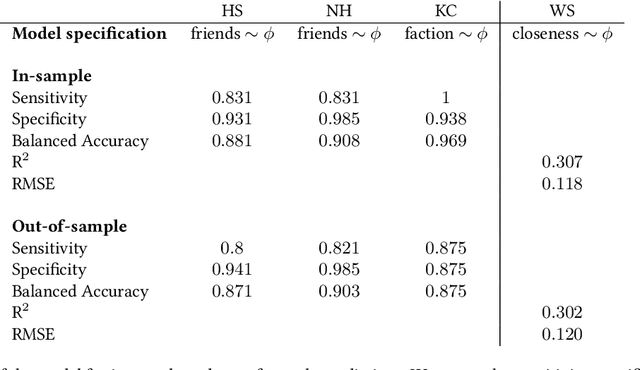


Abstract:Positive and negative relations play an essential role in human behavior and shape the communities we live in. Despite their importance, data about signed relations is rare and commonly gathered through surveys. Interaction data is more abundant, for instance, in the form of proximity or communication data. So far, though, it could not be utilized to detect signed relations. In this paper, we show how the underlying signed relations can be extracted with such data. Employing a statistical network approach, we construct networks of signed relations in four communities. We then show that these relations correspond to the ones reported in surveys. Additionally, the inferred relations allow us to study the homophily of individuals with respect to gender, religious beliefs, and financial backgrounds. We evaluate the importance of triads in the signed network to study group cohesion.
Predicting Sequences of Traversed Nodes in Graphs using Network Models with Multiple Higher Orders
Jul 13, 2020

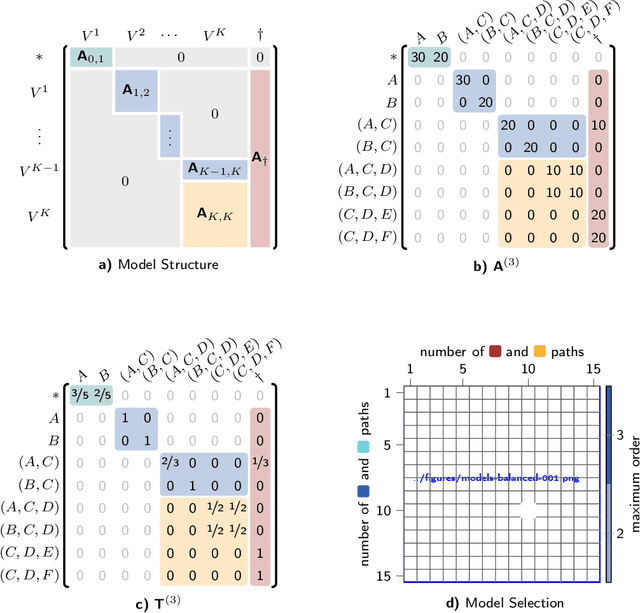

Abstract:We propose a novel sequence prediction method for sequential data capturing node traversals in graphs. Our method builds on a statistical modelling framework that combines multiple higher-order network models into a single multi-order model. We develop a technique to fit such multi-order models in empirical sequential data and to select the optimal maximum order. Our framework facilitates both next-element and full sequence prediction given a sequence-prefix of any length. We evaluate our model based on six empirical data sets containing sequences from website navigation as well as public transport systems. The results show that our method out-performs state-of-the-art algorithms for next-element prediction. We further demonstrate the accuracy of our method during out-of-sample sequence prediction and validate that our method can scale to data sets with millions of sequences.
 Add to Chrome
Add to Chrome Add to Firefox
Add to Firefox Add to Edge
Add to Edge